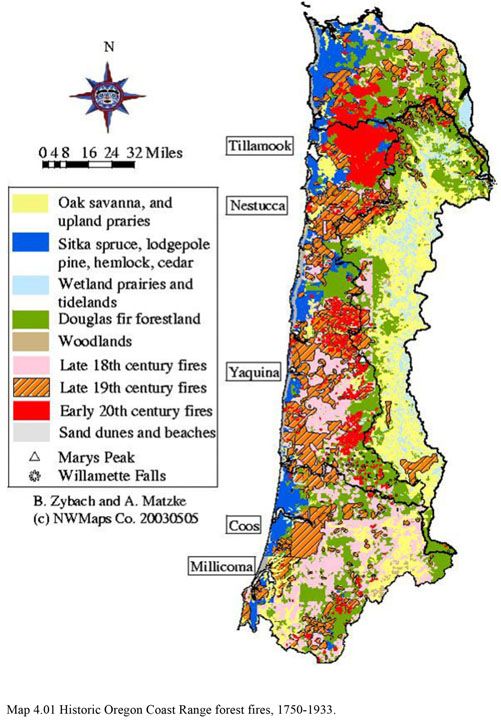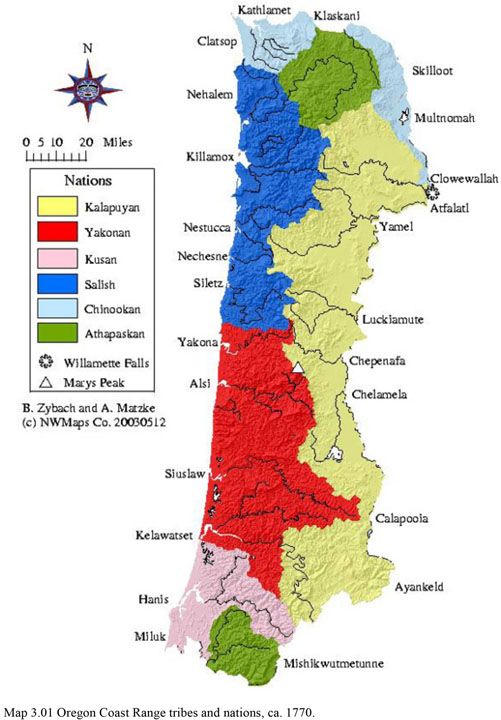Christmas Morning on the Farm
A remembrance When I was a youngster growing up in northern Idaho, my Albertson grandparents managed the Bonner County Farm.

Carl Stoltenberg was retired and nearly blind by the time Bob Zybach finished his Master’s thesis and he died two years before Bob finished his PhD.
But it was Stoltenberg – then Dean of the Oregon State University College of Forestry - who convinced Zybach to return in the College of Forestry in 1988. Three years later, he earned his undergraduate degree in forest recreation, then his Master’s in 1999 and his PhD in 2003.
It’s unfortunate that Carl never had the chance to study Bob’s MS and PhD research. Both documents should be required reading for Oregon State University’s trustees, OSU Forestry Dean, Tom DeLuca, and the Oregon Board of Forestry.
I say this amid the swirl of events surrounding OSU Forestry’s proposal for hijacking the Elliott State Forestry from Oregon’s Common School Fund, then allowing OSU forest scientists to turn it into a research forest funded by Oregon taxpayers.
OSU Forestry has thus far been paid close to $900,000 for this goofy idea courtesy of the three member State Land Board which has been trying to figure out how to unload the Elliott since it fired the Oregon Department of Forestry after Portland Audubon-Cascadia Wildlands-Center for Biological Diversity neutered the state’s Elliott forest management plan in a 2012 lawsuit.
With no timber flowing from what is easily some of the most productive forestland on earth, the Elliott has become a financial drain. Lone Rock Timber, a well-regarded timber landowner in Roseburg, submitted a $220.8 million bid for 82,500 of the Elliott’s 93,000 acres – a price that been artificially set by the State Land Board.
Bidders were not allowed to submit bids for more or less – a ridiculous requirement that made it impossible for the state to even get close to the Elliott’s true market value, which is easily $1 billion and perhaps more. The bid package was sent to more than 50 possible purchasers including counties, tribes and environmental groups. Lone Rock was the only bidder.
Initially, Lone Rock’s bid was accepted by the land board - Kate Brown, Governor, Shemia Fagan, Secretary of State and Tobias Read, Treasurer – but the trio reversed course following a public outcry against the sale.
Lone Rock sued the board and the Oregon Department of State Lands in 2019 – only days after the state legislature approved a $100 million bond sale covering about half the state-sanctioned $200.8 million price tag – again nowhere near the Elliott’s estimated value.
Under the deal Lone Rock offered, it would have partnered with the

Cow Creek Band of the Umpqua Tribe of Indians. I would have picked the Confederated Tribes of Coos, Lower Umpqua and Siuslaw Indians because the Elliott lies within their ancestral lands. Cow Creek tribal lands are inland and south of Roseburg, but the Cow Creek-Lone Rock relationship is an old one. There are friendships here.
Lone Rock is owned by the many talented and politically astute Sohn brothers who – as a beginning point – clearly understand that every acre of timberland in western Oregon was managed by Indians for eons before white settlement began in the 1840s. So why not partner with the original owners?
Which brings me back to Zybach’s Master’s thesis – _Using Oral Histories to Document Changing Forest Cover Patterns in Soap Creek Valley Oregon 1500-_1999 – and his PhD dissertation – The Great Fires: Indian Burning and Catastrophic Forest Fire Patterns in the Oregon Coast Range 1491-1951.
This is the Elliott story writ large. No one on the OSU forestry faculty and certainly no one in Oregon’s anti-forestry crowd should pretend to know anything about these 93,000 acres if they haven’t read Zybach’s MAIS or his PhD. According to Bob, I may be one of no more than a dozen people who have read both documents. What a shame. Should anyone care, there is a marvelous PBS series here.
How can anyone at Oregon State write a management proposal for the Elliott without a solid and well documented understanding of the quite significant role that Indians played in shaping western Oregon’s forests over the last 500 years? Bob tells the story in exquisite detail in both his MAIS and his PhD.

It will take us weeks to break Bob’s work into manageable pieces, but we’re going to do it. Meantime, here are the crib notes from our Evergreen research and Bob’s quite specific and ongoing western Oregon studies:
Why do those who purport to care so much about western Oregon’s forests continue to ignore and/or deny such a vast storehouse of history – information that sheds an illuminating light on the past, to say nothing of the future?
When Bob was working on his Master’s thesis, the living-dining area in the small house he was renting in Corvallis was stacked high with boxes filled with research material. And when I asked him how he found what the Interagency Spotted Owl science team said did not exist he said, “Oh, that’s easy. I have a library card.”
The Internet is today’s library card. Federal, state, county and community libraries hold most of the same sources that Bob tirelessly unearthed in the bygone era of land lines, fax machines and old fashioned legwork. He continues to scan historical documents for posting.
My two cents worth: The Elliott does not belong to Portland’s hoi polloi. There are moral, ethical, cultural, economic and racial questions that will not go quietly into the night. Oregon State’s trustees, the State Board of Forestry and Dean DeLuca all need to take a deep breath, read Bob’s research and then…toss their plan in the nearest waste can, give the Elliott back to its original owners and transfer its fair market value to the Common School Fund.
With the Elliott safely back in Indian hands, it can become a rich cultural touchstone and a legitimate learning laboratory for students of all ages – and not the latest political conquest for Oregon’s anti-everything wrecking ball.
You 100% tax-deductible subscription allows us to continue providing science-based forestry information with the goal of ensuring healthy forests forever.